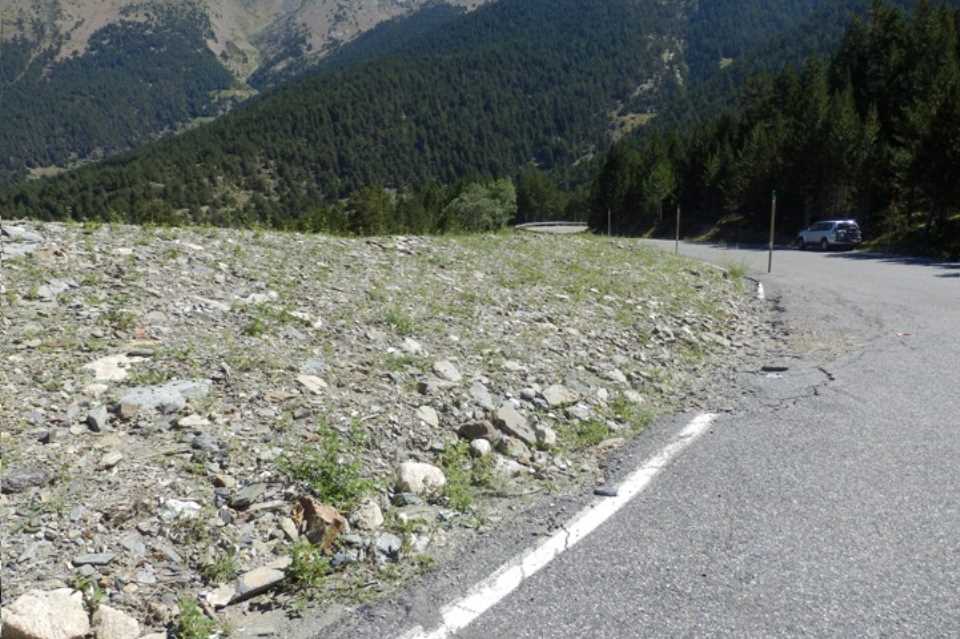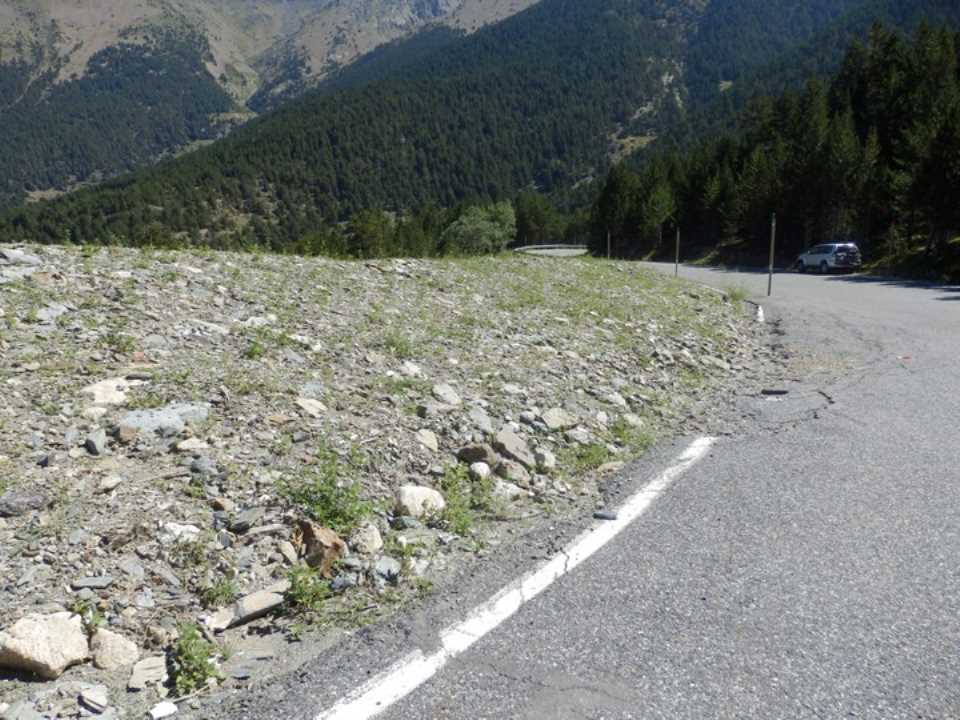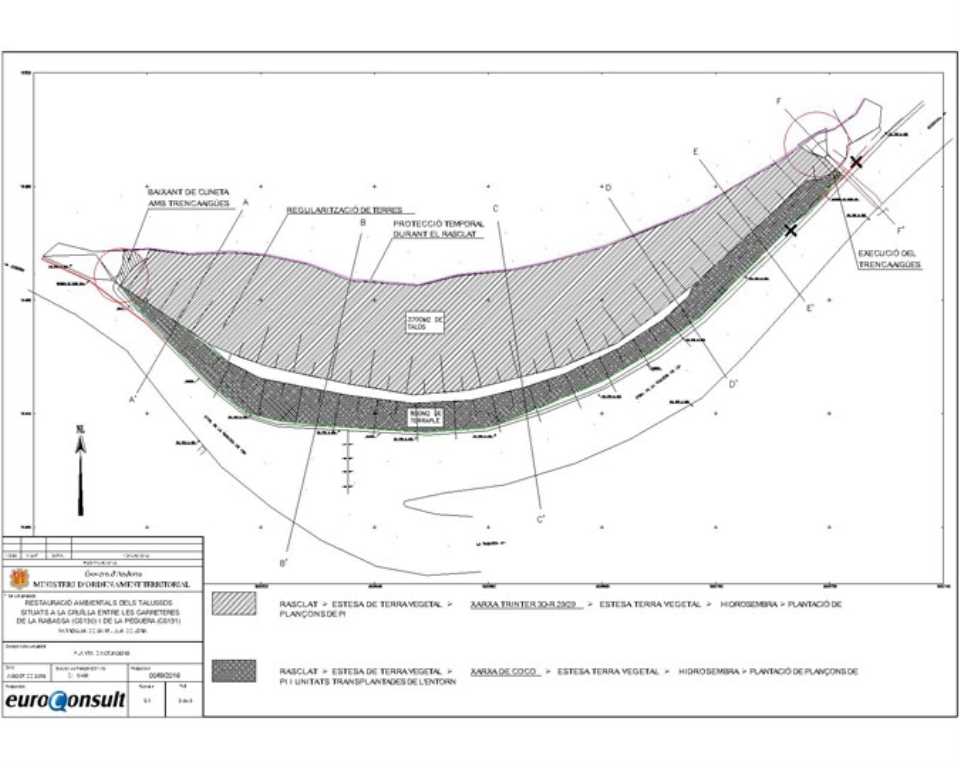Environmental restoring of the slopes located in the crossroads of La Rabassa (CS 130) and La Pegura (CS 131) roads. Parròquia of Sant Julià de Lòria
 The study area corresponds to an embankment located at the crossroads of the secondary roads of La Rabasa and La Peguera (CS 130 and CS 131, respectively) where some of the originating materials were poured, with emergency character, of the debris flow that in July of 2015 affected the road and the catchment of water of the Comú of Sant Julià de Lòria located in the zone of confluence between the river of la Peguera and the river of Gargallet. This confluence area is located just above the secondary road of La Peguera in the intersection area with the Peguera river.
The study area corresponds to an embankment located at the crossroads of the secondary roads of La Rabasa and La Peguera (CS 130 and CS 131, respectively) where some of the originating materials were poured, with emergency character, of the debris flow that in July of 2015 affected the road and the catchment of water of the Comú of Sant Julià de Lòria located in the zone of confluence between the river of la Peguera and the river of Gargallet. This confluence area is located just above the secondary road of La Peguera in the intersection area with the Peguera river.In order to be able to leave the road of La Peguera practically urgent, the pine trees located in this place were cut (where land had already been landed previously) was carried out and the necessary accesses were made to reach the lower area, from where it was transported, extending and compacting, the lands dragged according to a slope of about 45º. While these works were carried out, no environmental treatment was carried out, except to remove the existing plant ground and extend it to the outer surface of the resulting embankment.
The main objective of the present environmental restoration is to restore and contribute to a landscape improvement of the exterior walls of the embankment, which due to the current slope needs soil fixing techniques, favoring the landscape integration of the resulting platform from any of the two roads, in order to recover the initial appearance.
In a synthetic way, the planned restoration work would be:
- Excavation by location of existing road water drains and cleaning of the driving, or replacement in your case (it is planned to cut the road to carry out the work).
- Execution of concrete downpipes, paved by reduction of the speed of the water at the exit to the slope.
- Construction of a transitable reinforced concrete ditch, on the boundary between the roads and the embankment.
- Rippled and reperfused of the entire surface of the embankment, by means of the more superficial stones and regularization of the resulting surface (with a provisional closure at the base of the slope while the rake is executed to retain the detached stones).
- Extension, fixation and adaptation of synthetic erosion control networks for land stabilization.
- Extension of vegetal lands in a thickness between 5 cm and 10 cm below and above the nets, depending on the area, in order to improve its adaptation to the terrain and facilitate herbaceous growth.
- Hydroseeding of the entire surface affected.
- Planting of pines of forest reforestation type, on all the external surface of the slope of the embankment and, in addition, in the upper flat zone; also planting trees and/or bushs from the forest located above the road.
All work will be carried out by taking the necessary measures for environmental monitoring and safety at work.

